June 2022

Soundastic Reference Stereo Integrated Amplifier Review
From Poland, a passive pre with solid-state output.
Lyrics from the song “The Sound of Music” from the same title as the film… adapted a little to start this review. This reviewer has become very impressed with this solid-state design.
The hills are alive with the sound of music, with the Soundastic Reference
With songs they have sung for a thousand years
The hills fill my heart with the sound of music, with the Soundastic Reference
My heart wants to sing every song it hears…
Origins And Pedigree
The founder, head engineer of Struss Audio and designer; the late Zdzisław Hrynkiewicz-Struss 1951 to 2021, Started up Struss Audio about 40 years ago dating back to the early 1980s. He passed away recently, and the company has reformed under the name Soundastic. Their first product in the line is the model Reference, which is the subject of this review.
Struss began his career at the Polish Academy of Science as a specialist in Engineering and Electronics. Zdzisław was inspired by the work of the late Finnish professor and top-notch audio engineer Matti Otali. Matti passed away in 2015. Matti had collaborated with Phillips and other audio manufacturers. The basic designs are based on the concept of a three-part amplifier. Zdzisław and Struss Audio held many patents for amplifier designs, which have been incorporated into the Reference integrated amplifier.
The current company, Soundastic is comprised of the team who were involved with the Struss Audio company. The lead engineer was a partner and collaborated with Mr. Hrynkiewicz Struss. Previous integrated amplifiers were sold and bannered under the Struss Audio name, which garnered benchmarks and award-winning reviews over the years. The Polish hi-fi industry is starting to emerge on the International scene. Soundastic is one of the gems we have discovered in the mines of high-end treasures on the European continent.
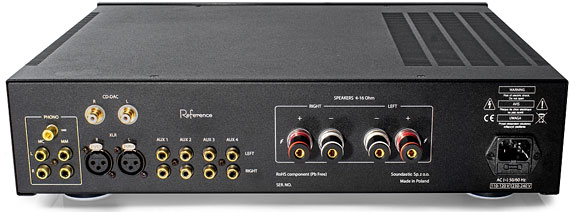
Patents, Technology, And Philosophy
The Struss audio patent 176514 is part of the secret sauce. They say that the entire platform of technology in the Reference is based on the patent. And it does the following:
The neutrality of sound by using only JFET transistors and symmetrical inputs in a design. In the signal path, the amplifiers do not have any capacitive element (capacitor).
Lack of supply voltage distortions – in dynamic load conditions that appear in the system. Non-definable waveforms are mathematically liquidated, and voltage fluctuations do not affect the stability of the bridge. This contributes to a reduction of non-linear distortions and affects the improvement of the frequency characteristics of the amplifier.
The preamplifier stage is completely passive with the signal flowing through a high-quality ALPs potentiometer.
The input stage of the amplifier uses JFETs in the signal track, the amplifiers do not have any capacitive element (capacitor), it was designed only using JFET transistors using symmetrical input.
The Reference is a Dual Mono amplifier employing massive toroidal transformers used to regulate and provide steady power to the Reference. This is a heavy unit. If weight is a metric of value, then check the box for quality.
The goal for Soundastic was to design an amplifier emphasizing even-order harmonic distortions to capture much of the sonic imprint of a vacuum tube amplifier sound. JFET devices are used in very high-end amp designs. John Curl of Parasound uses JFETs in his statement JC-1 monoblock amplifiers that sells for $17,000, yet high-end quality can be enjoyed with the Soundastic Reference priced at a far more reasonable $6500.

Physical Properties And Controls
The Soundastic Reference unit that was furnished to Enjoy the Music.com features an attractive black faceplate. There are only three controls on the front of the unit; the volume knob, which is motorized with an accompanied remote control, and an on and off power switch, with an input selection knob. All control switches are in a gold plated shiny gold plated finish. The volume knob has an embedded red LED indicator light that is visible during the operation of the unit. The input function indicator lights use blue LEDs. The Reference reveals an understated elegant look that can be accessorized just by just dimming the lights low. The red and blue LEDs possess just the right level of luminance to be engaging, but not distracting to the eye.
The rear speaker connectors are five-way WBT banana posts. RCA connectors are gold plated with the CD input featuring a better class of connectors. Also, balanced input connectors are available for hook-up. There are inputs for MM and MC phono connections. There is one preset for cartridge loading for moving magnet and moving coil inputs. MM is set at 47kOhm, the MC input set at 100 Ohms, pretty much set for the sweet spot This is a completely closed architecture unit, meaning (no pre-out or main in) inputs / outputs. A truly classic integrated amp.
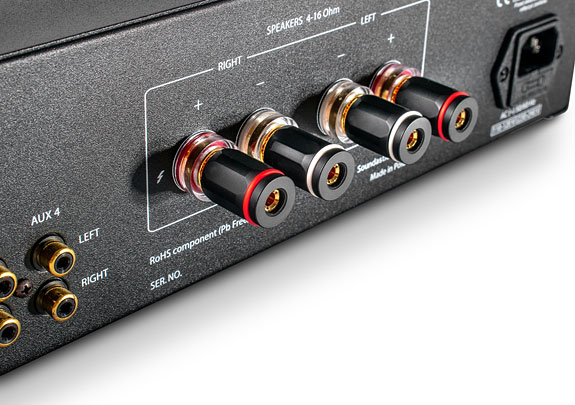
You hardly see these designs anymore. It’s not an Edward Scissor Hands unit sporting a multitude of features such as, streaming, Bluetooth, or phone App control. The Soundastic Reference was purely designed to play music at the highest level of performance. I still use the venerable NAD 3020 integrated amp and love its simplicity in addressing music playback, without having to plunge the depths of annotated and layered menus!
There are no tone and balance controls on the unit, because of its dual-mono passive pre-amplifier / line stage design. More on that later within this review. There’s an interesting modern-esque Bang and Olufsen type looking remote control provided with the unit. There are two press-activated buttons just for volume control. There is no nomenclature on the remote to tell you which button to use for volume up or down?
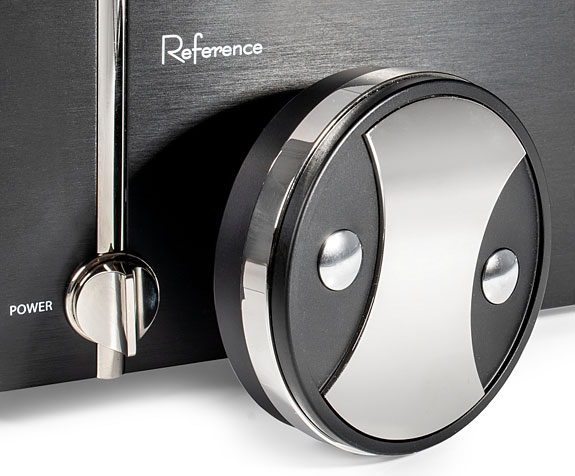
The Soundastic Reference is a heavy unit at over 35 lbs. As mentioned, it has two massive toroidal transformers and heat sinks on board. The heat sinks are flush with the chassis and do not stick out of the amplifier. Better aesthetics and easier on the touch. The amp is vented on the top third of the unit to allow convection cooling to take place. The unit is just warm to the touch. I would not stack any components on top of the unit, as with any power amp.
Passive Preamplifier Section
The Soundastic Reference does not have tone or balance controls. This is because the first stage of the amplifier section is a passive design. There is no active circuitry to allow for any signal manipulation. The advantages are the elimination of phase shift, input and output impedance variables, resistance or capacitance issues when utilizing this passive design. The result is an openness and transparency of sound. I’ve heard many passive preamps that do the openness trick well, but at the expense of dynamics and weight of the music. The Reference does not sacrifice any of those concerns with its sonic presentation.
I believe the Soundastic patented technology circumvents the passive dilemma short comings. The solution is most likely because the second stage of amplification utilizes an array of JFET devices to increase signal amplitude that precedes the third / final stage of amplification via the eight MOSFET output devices.

Listening With The Magnepan LRS Speaker
Most of the listening sessions were performed with the Magnepan LRS ribbon loudspeakers. Gawd, there is yet another model, the LRS Plus! I will be getting those to review for the magazine later this year. The LRS are the most revealing listening devices in my cadre of loudspeakers. I will comment on other speakers used to evaluate the Reference as well in this review.
It takes a bit of time listening to completely understand the nature and behavior of an audio component. I have gone back and forth between many amplifier units over the past few months that are in the process of review. One would say, it’s a thorough, almost forensic analysis of an organic biological system. This one comes out alive though! Glad I was allowed the time to live with the Reference for the long term. Although, first impressions are always important in a dance to fall in love.
Playback Software
I’m glad that my family subscribes to the Euro Brit music magazine MOJO. A sampler CD comes attached to each issue. I played tracks from three of them. All well recorded and an interesting mix of contemporary music featuring new and proven artists. From Pharaoh Sanders to Alison Krauss with Robert Plant. Also, various CDs and LPs from my music collection. Many of them are just good music and not necessarily audiophile recordings. Can’t dine out to a five-star restaurant every night. There is still magic in what we consider just average-sounding CDs and LPs. It’s all about the music people! There is an abundance of hidden musical information in older recorded musical software. Great components can allow the reader / listener to discover the magic in those recordings. An overly analytical and non-musical sound over a long period can be emotionally and painfully exhausting to listen too.

The first thing I noticed was the wholeness of the sound of instruments and voice listening to the Reference. I would use an analogy of vision to describe this sound quality of the playback. Many high-end amplifiers will portray an instrument well defined in a particular recorded space, however, what many of them don’t do is render a wholeness and body to the instrument and voice. The instrument is there, but it’s like a loosely knitted hologram in the soundscape. I call it sound-double-vision.
Imagine crossing your eyes and trying to focus on the shape of the object. Listening to Alison Krauss on the Mojo CD, I was aware of the weight and presence of her body singing alongside of Robert Plant on the track, “It Don’t Bother Me.” Nora Jones on Joel Harrison’s Free Country album was palpable enough to suggest she was present in the room. My good friend Steve the stereo audio hobbyist and audio compatriot said, “The sound of this amp is luxurious, and it has density and weight.”
Soundastic’s Reference integrated amplifier shows off in its ability in the bass department by projecting a richness and fullness to the music. Not thin or threadbare at all. This integrated amp seems to lend an extra octave to the lower bass. The bass on Track 4 & 5 on the Mojo 2021 sampler, with Nick Cave and Warren Ellis, and White Elephant sounded deep and visceral on the Magnepan LRS!
I played Mel Brown world-renown drummer’s Live At Jimmy Maks CD on my Sound Artist LS3/5A’s and the Falcon Silver editions, my jaw dropped instantly, I was being transported to the now-defunct Jazz venue here in Portland, OR. Quite a story on its own revolving around the late Jazz impresario Jimmy Mak who was driven with passion and love for Jazz music, along with his offerings of great Greek food all served in his top-notch restaurant. Portland saw and heard some of the best Jazz artists of our time at Jimmy Mak’s two locations.
Well, back to this recording that debuted in 1999. This recording reproduced by the Soundastic and Sound Artist combo sounded frighteningly real! The recording is simply done well, delivering all the club ambiance flavor hinged to great performances by a cast of Portland’s best Jazz and R&B artists. You can see exactly where the musicians are positioned on stage. There is an immersive soundscape cocoon of space that envelopes around the listener with the Soundastic Reference. It produces excellent high-frequency extension without being to sparkly. I’m talking about hearing a natural decay and reverberance with air from high frequencies surrounding the panorama of a live performance. Violins sounded authentic.
Tonality is one of the special qualities of the Soundastic Reference solid-state stereo integrated amplifier. It carries the heft and solidly delivers real life-size images of musicians and their instruments. There is rich texture, perhaps can be a little thick at times, which is dependent on the recordings played. Live performance versus studio recordings can always very in the quality of sound as we all know. The Reference will bring out the best of most recordings and dig out the goodness laying in the those optical and vinyl grooves.
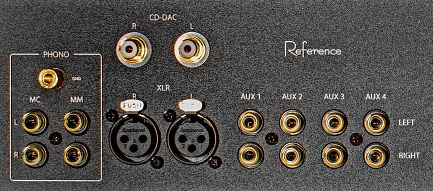
Soundastic’s Reference provided a tube-like synergy with the LS3/5A speakers and was a rewarding pairing. I heard what MOSFET output devices are capable of sounding like with an array of JFETs in the front end utilizing patent 176514. All about the harmonics teasing the ear to keep playing more music.
Back now to listening to the Magnepan LRS. Some of my selections; Henry Mancini the Pink Panther and his Orchestra CD, Buddha Records. This album captures the brilliance and mastery of Henry Mancini’s compositional and conducting skills. The recording is unveiled and conveys the essence of a large performance. I was completely enveloped by the sheer scale and immensity of the soundstage the Soundastic Reference drove through the LRS speakers.
There is a record from Reference Recordings, Testament Performed by the Turtle Creek Chorale and The Dallas Wind Symphony, that features a large men’s chorus with some tasteful and artful orchestration. Here is the test for being able to listen to the individual voices enunciating and singing the words to the pieces. Some systems do not reveal enough detail to hear the words spoken clearly. The Soundastic Reference does give you the sonic lens to discover the lyrics, which draws you more into the performance emotionally.
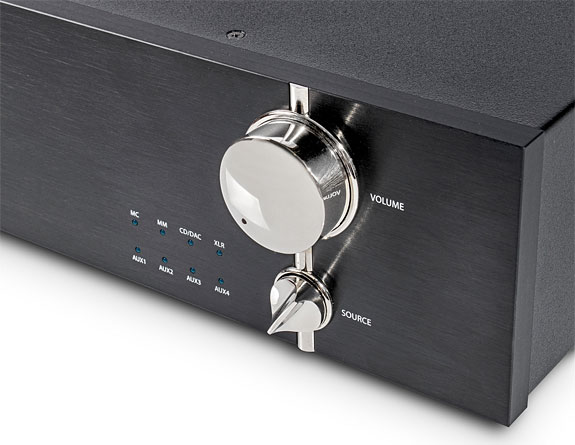
Final Take Away
I’m usually a vacuum tube head by nature and was not expecting a lot out of a solid-state integrated amp that sells for $6500. I opened the shipping box and found a very heavy piece of equipment, thinking Soundastic had just sent me a power amp and not an integrated unit. First impressions can lead to assumptive prejudices in the early stages of reviewing. I put it on my rack and looked at how elegant it looked. It did not overwhelm my senses expecting too much gear bravado. The Reference appeared to have been on the shelf as a long-time resident in my home. Understated, yet a familiarity about it huddled on the stand, like a big black cat with its eyes open ready for a pet. Hoping for some purring to come?
The Soundastic Reference, like all new electronic components, needed a little time to burn in for a few days before listening. The first thing I noticed was how immersive and large the presentation emanated from the amp. It sounded like music, engaging and sonically whole. Some would critique the amp as being a little soft or too warm sounding. Those who are looking for pinpoint, razor-sharp, super squeaky clean sound will not grasp the Geist of the Soundastic Reference. Long-term listening allows for the high and low scores to be factored out in order to discover the merits of enjoyable musical listening.
I believe Soundastic’s Reference stereo integrated amplifier is an accurate depiction of what the amp is, a reference component. I’ve heard many solid-state designs over the years, and it is rare to come upon such an impressively designed piece of electronics. If you consider that there’s no need for the added cost for a separate preamplifier or interconnect cables, the Reference becomes a solid exceptional value in audio.
| Tonality | |
| Sub–bass (10Hz – 60Hz) | |
| Mid–bass (80Hz – 200Hz) | |
| Midrange (200Hz – 3,000Hz) | |
| High Frequencies (3,000Hz On Up) | |
| Attack | |
| Decay | |
| Inner Resolution | |
| Soundscape Width Front | |
| Soundscape Width Rear | |
| Soundscape Depth | |
| Soundscape Extension Into Room | |
| Imaging | |
| Fit And Finish | |
| Self Noise | |
| Emotionally Engaging | |
| Value For The Money |

Check out Enjoy the Music!
See many great reviews by Enjoy the Music.com at this link.
Specifications
Type: Stereo solid-state integrated amplifier
Frequency Response: 5Hz to 100kHz (–3dB)
Power Output: 140 Watts
Amperage: 40 VA (1200 VA peak)
Distortion / THD: 0.05% at 1W
Slew Rate: 150 V/μs
SNR: -130dB (IHF – A)
Potentiometer: High-precision Alps Blue Velvet
Inputs: Four unbalanced RCA and MM phono
Remote Control: RC5 code
Dimensions: 430mm x 95mm x 358mm (WxHxD)
Weight: 35 lbs.
Price: €6500 / $6500
Company Information
Soundastic sp. z o.o.
Aleja Komisji Edukacji Narodowej 36/112B
PL – 02-797 Warszawa
Voice: +48 509 709 703
E-mail: ab@soundastic.eu
Website: Soundastic.eu








Leave a Reply
Want to join discussion?
Feel free to contribute!